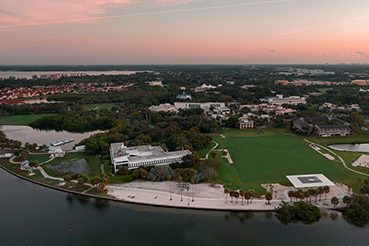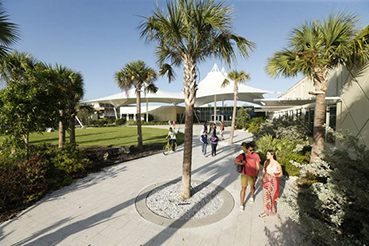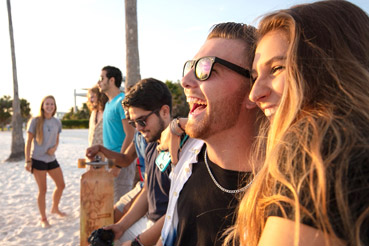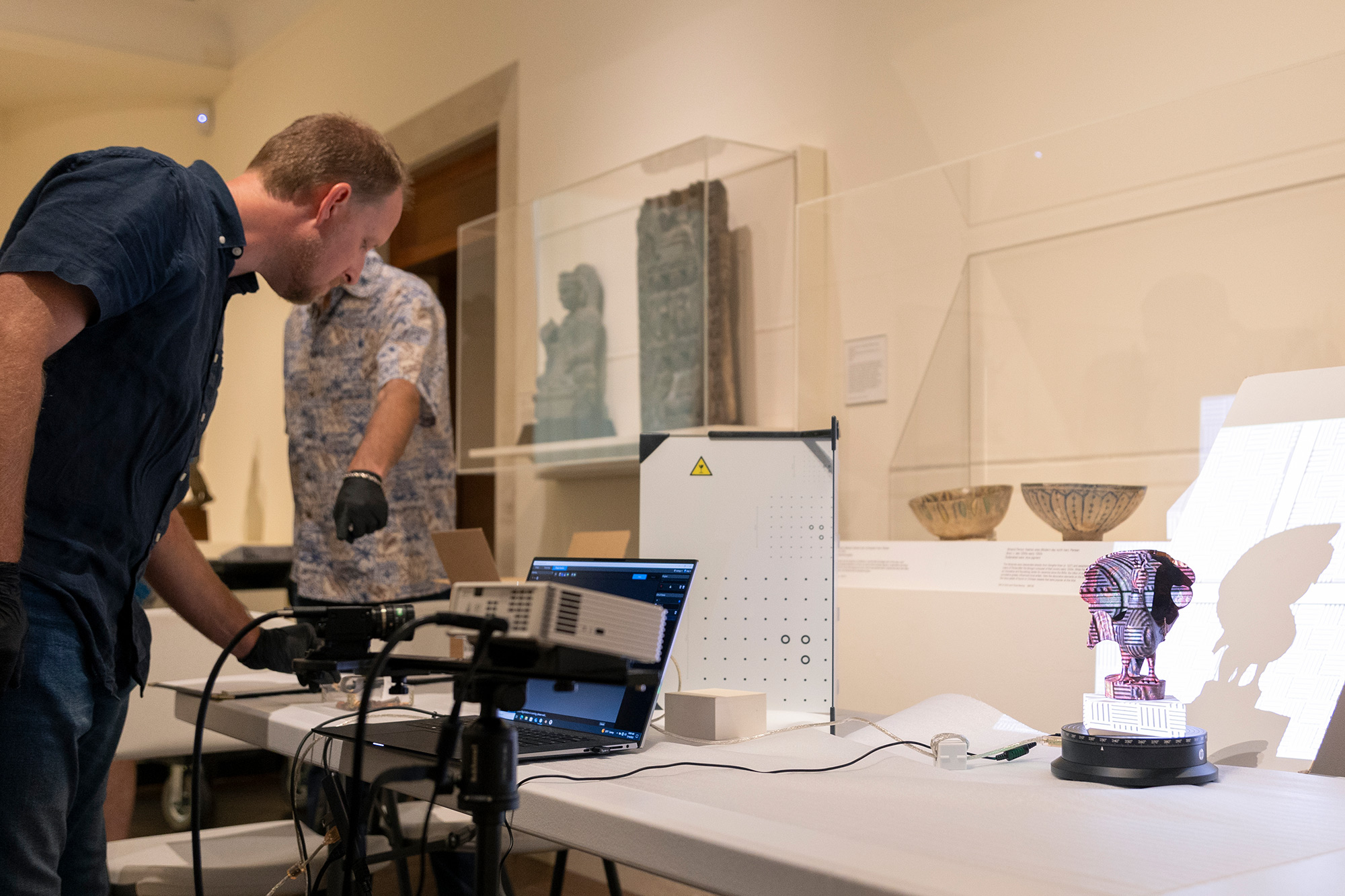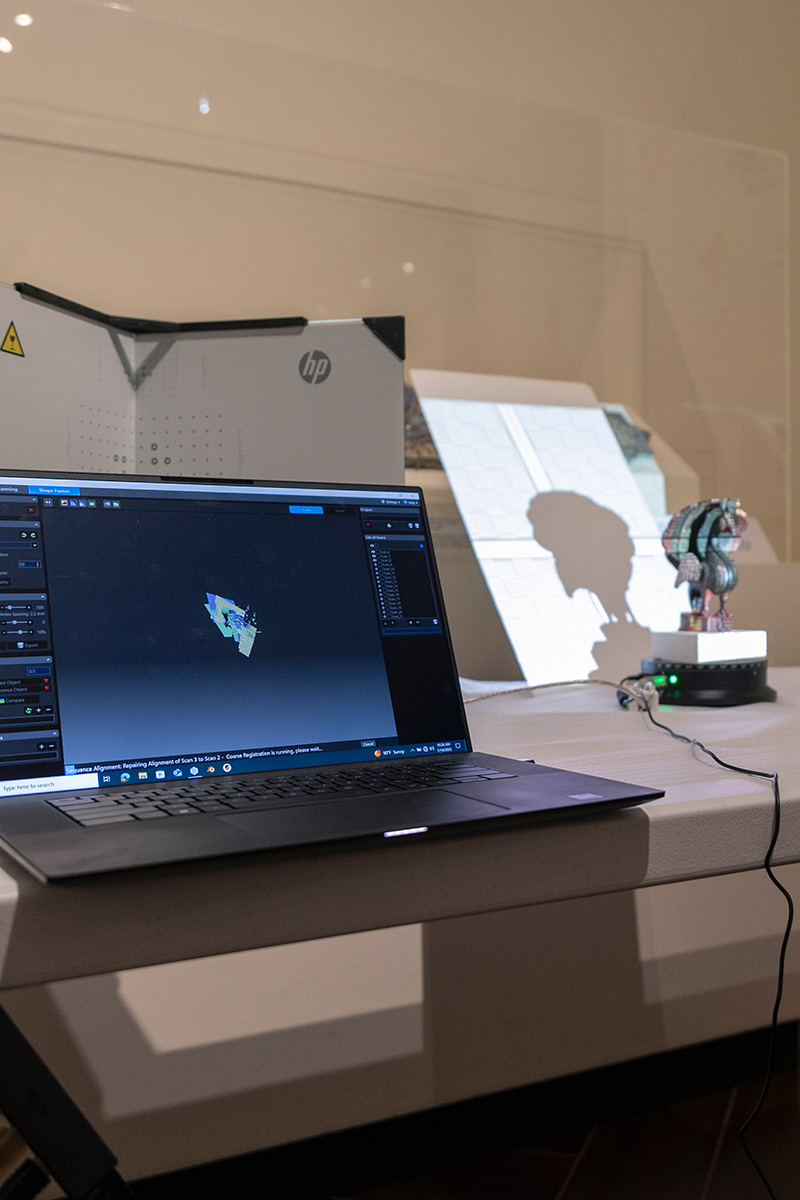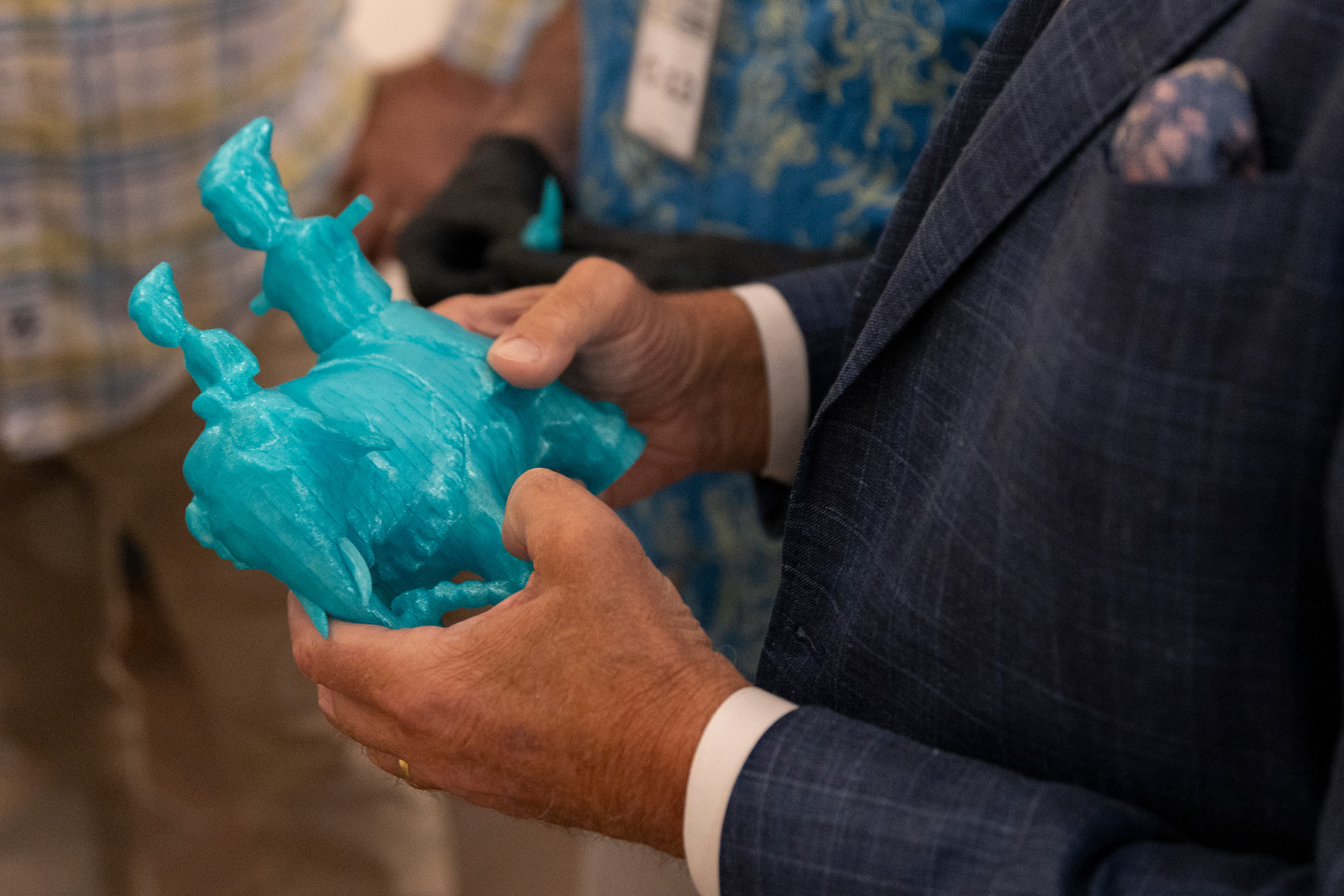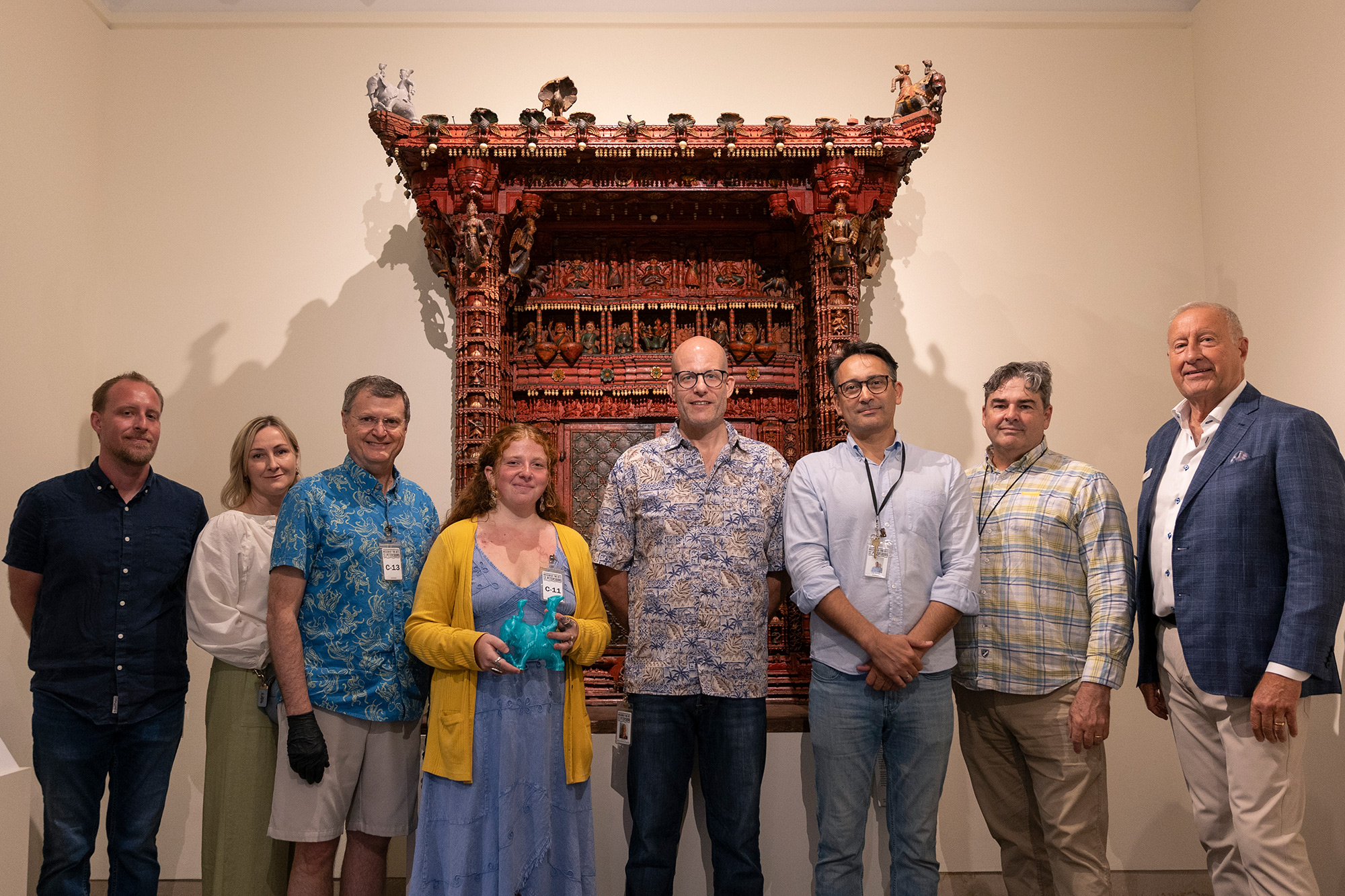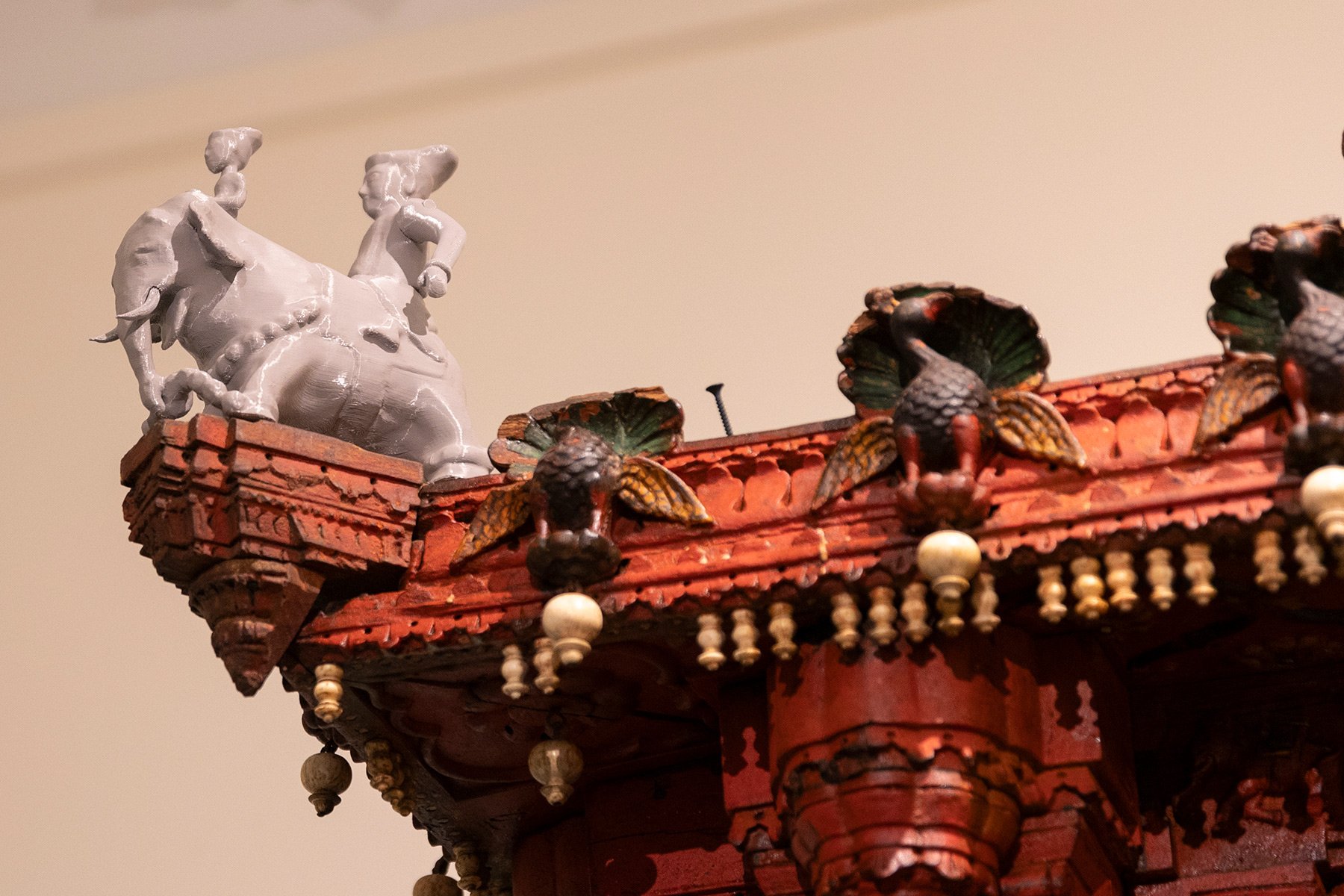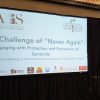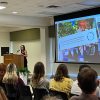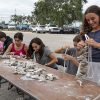Grace Adler knew her Eckerd College summer internship project would be tricky.
Working with 3D scanning and printing equipment she’d never used before, her job was to re-create a 400-year-old intricately carved wooden elephant that is part of a Jain Shrine on display at the Museum of Fine Arts, St. Petersburg.
The shrine was gifted to the museum in 1966 by Louis E. Seley and his sons, Hervey and Elliot, Jr. The MFA is one of only three museums in the country that has a Jain Shrine in its collection; the others are in Kansas City and Cincinnati.
But Grace had several key factors in her favor. A rising senior from Aurora, Illinois, Grace is majoring in visual arts and humanities with a concentration in religious studies. So the significance of the project was not lost on her. She also had Michael Hilton, Ph.D., associate professor of computer science at Eckerd, as her academic supervisor. Hilton specializes in 3D printing and scanning. And then there was the staff at the museum who helped supervise the project that included renowned conservator Luis Seixas, and MFA Director of Collections Management Jason Wyatt.
Finally, there was the person who set the internship in motion—Nelson Lees. A member of the Academy of Senior Professionals at Eckerd College and the organization’s current vice president, Lees is also a docent at the MFA. When he learned that the museum was trying to replicate missing parts of the shrine, he contacted Nicole Manuel, Eckerd’s Creative Arts Collegium coordinator and collection manager, and she contacted Hilton. With help from Maddy Nelson ’21, employer relations and internships coordinator at Eckerd, the internship was born.
Back to the elephant. It stands a little more than 8 inches tall and about 6 ½ inches wide. On top of it is a rider holding a horn, and another rider holding a drum. There were originally two elephants atop the front corners of the shrine, but at some point before it got to the museum the other elephant disappeared.
The internship began May 27, ended July 19, and could extend into the 2025-2026 academic year. Grace received summer housing and a $1,500 stipend through Eckerd’s Academic Internship Fund.
“I think this experience is so unique. I never saw myself doing conservation and restoration work until it was presented to me,” Grace says. “I want to continue to tell these stories of history, and this is a great start. This work is just so powerful. I would love to continue doing it.”
On a Monday morning in July, the Eckerd cohort brought three plastic copies of the elephant to the museum. “Jason and Luis were very pleased and agreed they were almost exact replicas of the other elephant,” Grace says. “I was a little nervous because this is something I’m so new at. I wanted to make sure it was up to their standards.”
Without the matching elephant, Hilton explains, “The shrine looks unbalanced. Our goal was to make a copy of that elephant to put on the other corner to show what the shrine originally looked like. I’m so glad they contacted us… The scanner doesn’t see every part, so Grace used her artistic skills to fill in the gaps. We 3D printed it over and over again, trying to get everything just right. It took us a month.
“There is a deep sense of satisfaction,” Hilton adds, “and it was a huge boost for Grace. This was something very few students get to do. It’s a new field, and it’s not something that many people know how to do. Being an artist and working on conservation with the museum, she’s going to have a skill set that not many people have.
“It was a confluence of the technology that could make this possible. We can show the public what this really looked like in its heyday.”
Ethics are a central part of conservation and restoration, as MFA staff pointed out. “Luis told us about the rules,” Hilton says. “The new piece can’t improve on the original. We can’t try to beautify it or add detail that didn’t exist in the original.
“We’re giving them three elephants, one for the shrine that will be painted to match the other, and two more to put on display to show that this part of the shrine is not the real thing and to explain how we created it. We don’t want to have the public think it’s a real part of the shrine.”
Grace and Professor Hilton are already starting 3D work on other parts of the shrine. Three peacock figures have broken pieces, and several pins and pegs attached to the shrine are missing.
Stanton Thomas, the museum’s chief curator, says he looks forward to further collaborations with Eckerd. “I love the intersection of art history and new technology,” he says. “It’s such a win-win situation. By replacing lost or damaged pieces, this gives people a more complete idea about how objects looked originally.
“We’re hoping to have a touch screen or QR code in the room that leads to a conversation about the conservation process.”

